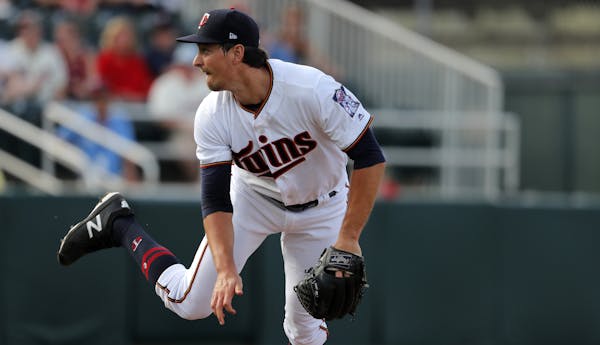Major League Baseball, with a traditional pace of change that can be generously described as "glacial," shook things up with some new initiatives announced last week.
While some things implemented in MLB for 2019 — such as establishing just one trade deadline — are interesting, the more intriguing news was a set of experimental playing rules being tested this season in the independent Atlantic League. Many are aimed at improving pace of play. So what do we think of all this?
First take: Michael Rand
Let's give MLB at least a pat on the back for taking some active measures. I'm interested in several of the things they're trying in the Atlantic League — most notably giving home plate umpires assistance with balls and strikes using radar tracking as well as mandating that teams play two infielders on both sides of second base.
If either of those measures means more balls in play, it's a step in the right direction. Because for as much as baseball has a length-of-game problem, it also has a significant lack-of-action problem. In MLB last season, 30.7 percent of plate appearances ended with a walk or strikeout. Even just 15 years ago, that number was below 25 percent. Shifts take away the incentive to put the ball in play. Walks and strikeouts are boring.
Twins writer Phil Miller: Ever since pro tennis began using those remarkable radar-tracked replays to take close calls out of the hands of line judges, I've believed it inevitable that baseball would someday adopt the technology. For decisions as critical to the game as balls and strikes — MLB hitters last year batted .339 when the count was 2-1, and .160 when it was 1-2 — it's amazing that there hasn't been more urgency toward making those calls more standard.
In fact, the arbitrariness has been celebrated: Witness Tom Glavine's reputation for getting huge strike zones, and today's emphasis on "pitch framing," a skill that could be rebranded as "umpire fooling."
I doubt that calling balls and strikes will ever be totally objective — it can't be, given the various sizes of players and the three-dimensional plate — but it's time we got a look at what such a system would look like. Maybe it's worth implementing and maybe it isn't, but I'm glad baseball is interested in finding out.
Rand: My concern on that front is whether it would really make hitters swing more or if radar-enhanced strike zones would allow for more manipulation and patience. But the notion of requiring two infielders on both sides of second base is one I would support. Shifts are good strategy, but they are exploiting a batter's natural tendency to hit a 95-mph pitch a certain way. Requiring defenses to at least play somewhat straight up would lead to more balls in play.
Miller: To me, that's a step too far, too fundamental. Defenders should play wherever they like. I'm also skeptical of the most controversial new test, too: moving the pitcher's rubber back 2 feet. If I were a pitcher, I would be leery of changing the physical nature of pitching, as this might. It's easy to imagine many unintended consequences, perhaps including shoulder and elbow injuries.
Rand: I doubt they'll actually implement the distance change in MLB. I'm skeptical much will change, actually.
Final word: Miller
Reminds me of an old joke: When God made West Texas, the ground hardened before he could put in trees and lakes and make it pretty. Rather than fix it, he decided to just make people who like it that way. What baseball really needs is more people who like it this way.
More Rand: startribune.com/RandBall
More North Score: startribune.com/NorthScore

Vikings' Oliver has sprained ankle; O'Connell 'happy' with new right guard

Gophers hope second bye week propels them even better than the first one did

RandBall: Officiating saved Vikings; game announcers helped nobody

Big Ten football power rankings: Where do Gophers sit entering final two weeks?

